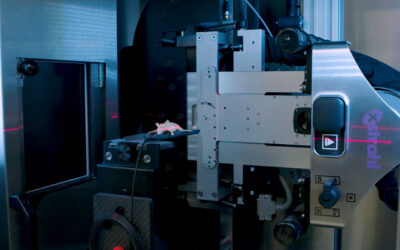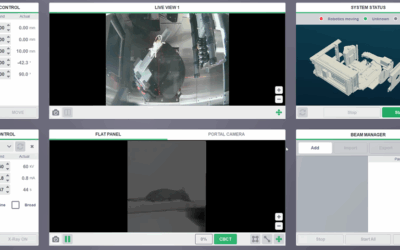Radiation therapy is a major treatment regimen for more than 50% of cancer patients. The collateral damage induced on healthy tissues during radiation and the minimal therapeutic effect on the organ-of-interest (target) is a major clinical concern. Ultra-small, renal clearable, silica based gadolinium chelated nanoparticles (SiGdNP) provide simultaneous MR contrast and radiation dose enhancement. The high atomic number of gadolinium provides a large photoelectric cross-section for increased photon interaction, even for high-energy clinical radiation beams. Imaging and therapy functionality of SiGdNP were tested in cynomolgus monkeys and pancreatic tumor-bearing mice models, respectively. A significant improvement in tumor cell damage (double strand DNA breaks), growth suppression, and overall survival under clinical radiation therapy conditions were observed in a human pancreatic xenograft model. For the first time, safe systemic administration and systematic renal clearance was demonstrated in both tested species. These findings strongly support the translational potential of SiGdNP for MR-guided radiation therapy in cancer treatment.
SPOTLIGHT: Behind the Beam: Tips, Tricks, and Translational Research from the Karolinska Institutet X-ray Irradiation Core Facility
Access the highly anticipated Xstrahl SPOTLIGHT Session, "Behind the Beam: Tips, Tricks, and Translational Research from the Karolinska Institutet X-ray Irradiation Core Facility," on demand now. This essential recording is a must-watch for radiation researchers and...







